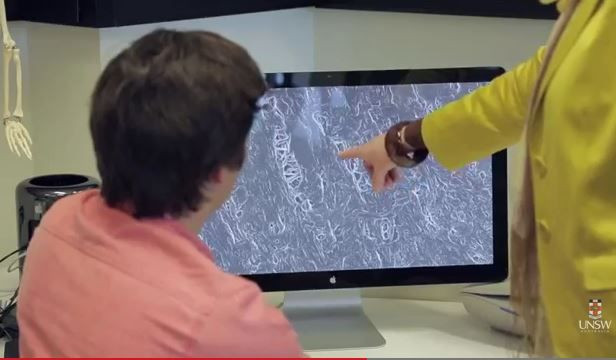Google Maps-Like Technology Helps Biomedical Researchers Zoom In On Osteoarthritis

A technology once used to scan silicon wafers for defects now moves through the human body scanning organs down to the level of a single cell. According to Dr. Melissa Knothe Tate, biomedical engineer and professor at University of New South Wales, this Google Maps-like technology promises to be a medical coup. Using the technology developed by German high-tech manufacturer Zeiss, Tate currently leads a project that explores osteoporosis and osteoarthritis.
Just as Google Maps is able to zero in on a location and then zoom in and show the finer details, Tate is able to focus on a whole joint (the knee, say, or the hip) and then rapidly and dramatically increase the level of detail right down to the cellular level. The technology allows Tate and her colleagues to collect and analyze, with additional help from Google algorithms, terabytes of data and to accomplish in a matter of weeks what once might have taken up to 25 years. Tate's research group also uses the most advanced microscopic and MRI technologies to investigate how movement and weight bearing affects the passage of molecules within joints. Combined, these techniques help them explore the relationship between blood, bone, lymphatics, and muscle.
“For the first time we have the ability to go from the whole body down to how the cells are getting their nutrition and how this is all connected,” Tate said in a press release. “This could open the door to as yet unknown new therapies and preventions.”
The first researcher to use the semiconductor system in humans, Tate presented several papers on her research at the Orthopedic Research Society meeting in Las Vegas. In her research she has focused on the human hip and osteoarthritis.
Specifically, in osteoarthritic guinea pigs, Tate has demonstrated a connection between molecular transport through blood, muscle, and bone, and how this is impacted by disease. Just like humans, guinea pigs develop osteoarthritis as they age. Increasingly, scientists believe this condition to result from a breakdown in cellular communication. For this reason, understanding the molecular signaling and traffic between tissues could unlock a range of treatments, including physical therapies and preventative exercise routines.
“Advanced research instrumentation provides a technological platform to answer the hardest, unanswered questions in science,” Tate said. She believes this will open up “avenues for fundamental discoveries, the implications of which may be currently unfathomable, yet which will ultimately pave the way to engineer better human health and quality of life as we age.” Longer, better years of living ahead!



























